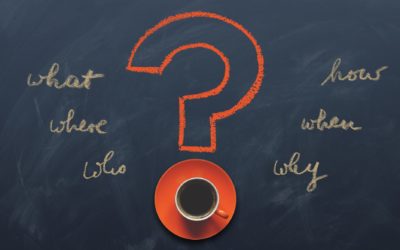The challenges of real life are continuously changing, and formal education alone is not able to meet the resulting demands. Individuals often have to acquire relevant knowledge and basic skills by themselves through informal learning. Even though almost all relevant information for this is available through the Internet, it is often difficult to find one’s way around the sheer endless depths of the Internet. Learners therefore need a suitable environment in order to be able to learn successfully and independently. This raises the question of what impact the individual learning environment has on (online) learning success. This post will look at what is meant by a personal learning environment, how it can increase one’s own learning success, and what challenges are associated with the construction of such an environment.
Disclaimer
All content and statements within the blog posts are researched to the best of our knowledge and belief and, if possible, presented in an unbiased manner. If sources are used, they are indicated. Nevertheless, we explicitly point out that the content should not be understood as facts, but only as a suggestion and thought-provoking ideas for the own research of the readers. We assume no liability for the accuracy and/or completeness of the content presented.
In the 21st century, knowledge accumulation is no longer linked to educational institutions. Instead, individuals have the opportunity to continuously educate themselves with the help of the Internet. However, since it is often difficult to navigate the flood of information on the Internet without support structures, learning success is often limited. One approach that has received a lot of attention is the creation of a personal learning environment (PLE), which is intended to promote the informal learning of an individual. Although there is no single definition of PLEs, in the literature they are usually understood as various collections of computer-based programs and networks that promote the individual learning process. The proliferation of social networks has made the Internet more people-oriented, and this is reflected in individual learning choices. Learners have the opportunity to adapt their learning environment to their own needs and can freely combine the various supporting media. In contrast to learning platforms that are reserved for a specific group (e.g. students and staff of a specific school or university), the focus of PLEs should be on openness and interaction. The sharing of content and knowledge among learners should be deliberately encouraged so that personal exchange is not lost in a purely digital environment. Informal learning, however, mostly requires initiative on the part of the learners. Although they can shape their learning environment individually, they are also responsible for selecting and assessing the resources themselves. The benefits derived from an informal PLE may be greater than those derived from formal and highly regulated educational networks, but the processes are usually more complex. This complexity poses a challenge for learners, as they need to acquire not only new knowledge but also relevant (technical) skills, which in turn corresponds to additional effort.¹
Learning software creators face challenges in the development process that must be overcome in order for learners to successfully use the corresponding programs within their individual PLEs. When designing programs, it is always important to consider trade-offs that result from different requirements. Individuals differ in terms of how they learn best, and no one-size-fits-all blueprint for the best possible learning outcome exists. Developers must therefore decide whether to create programs for specific usage or offer diversified options that users can choose for themselves.² One factor that is relevant in all areas of online learning is the sense of community. Physical distance makes it difficult for learners to create a community in which common goals and interests can be pursued. Deliberate interaction should therefore not be neglected, as sharing helps to build a sense of community. In addition, scientific studies have repeatedly shown that higher levels of engagement in the learning process can lead to better learning outcomes. A prerequisite for high engagement is that learners feel comfortable within the learning community. Belonging to a group also has a positive effect on the overall learning experience, and positive experiences often lead learners to increase their engagement and thus continuously improve.³ Especially in interactive learning and group work, it is possible to work on more complex tasks that are based on the actual challenges of professional life. Often, however, the focus here is also on a pure transfer of information, which does not meet the current requirements of the labor market. An authentic learning environment goes far beyond looking at relevant tasks. Instead, specific problems are solved in an application-oriented context with the aim of achieving the highest possible learning success. Such tasks are thus not only based on real problems but should also reflect them within the solving process. Problem-based learning in this case can lead to a better learning outcome from which the learners benefit in the long term.⁴
Knowledge accumulation through traditional educational institutions is not sufficient in many professions to reach the top of one’s industry in the long term. Instead of resting on formal education, many individuals invest a significant amount of their time in informal learning to achieve this goal. While formal education is typically completed as a young adult, informal learning represents a type of lifelong learning. In a dynamic work environment that is constantly changing due to technological progress and increasing competition, employees must show initiative in order to be successful. Since PLEs can sometimes be complex in structure, it can be worthwhile to invest early on in building an environment that is tailored to one’s own needs. Regular use and adaptation make it easier to deal with a complex learning system in the long term, and the complexity only builds up over a longer period of time. It can be assumed that many factors that are (at least partially) beyond one’s own control have an additional impact on individual learning success. This makes it all the more important to try out different programs and networks in a targeted manner, so that they can ultimately be put together to form a functioning overall construct. It can be assumed that individuals will be confronted with closed systems again and again, both in the context of education and in professional life, so that in this case PLE can only be a supplement to the mandatory systems. However, the increasing importance of soft skills and regular job changes also suggest that transferable skills are becoming more important and job-specific skills are becoming less important. Accordingly, one could say that the focus of independent learning should also be on topics that could be relevant in a variety of scenarios. Individuals should thus not rely on closed learning systems but invest early on in building an individual learning environment that offers them the opportunity to satisfy individual needs and generate maximum learning success.
Informal learning is only promising if suitable framework conditions are created that support the independent learning. The flood of information to which one is exposed by the Internet can only be used in a goal-oriented manner if processes and networks exist to which learners can fall back when accumulating knowledge. Time and again, the creation of PLEs that can serve as scaffolding for individual learning efforts is mentioned in this context. However, both the creators of the supporting programs and the users face challenges that need to be addressed. On the creator side, these tend to be significant trade-offs, whereas on the user side, the complexity of the systems and processes may be more of an issue. Only if the challenges can be overcome can maximum learning success be achieved for the learners.
¹ Martindale, T., & Dowdy, M. (2010). Personal learning environments. Emerging technologies in distance education, 177-193. Edmonton: Athabasca University Press.
https://www.researchgate.net/publication/228623677_Personal_Learning_Environments.
² Collins, A. (1996). Design issues for learning environments. In S. Vosniadou, E. De Corte, R. Glaser, & H. Mandl (Eds.), International perspectives on the design of technology-supported learning environments, 347–361. Lawrence Erlbaum Associates, Inc.
https://eric.ed.gov/?id=ED357733.
³ Sadera, W. A., Robertson, J., Song, L., & Midon, M. N. (2009). The role of community in online learning success. Journal of Online Learning and Teaching, 5(2), 277-284.
https://citeseerx.ist.psu.edu/viewdoc/download?doi=10.1.1.1081.8806&rep=rep1&type=pdf.
⁴ Herrington, A., & Herrington, J. (2006). What is an Authentic Learning Environment? In Authentic Learning Environments in Higher Education, 1-14. IGI Global.
https://doi.org/10.4018/978-1-59140-594-8.ch001.



